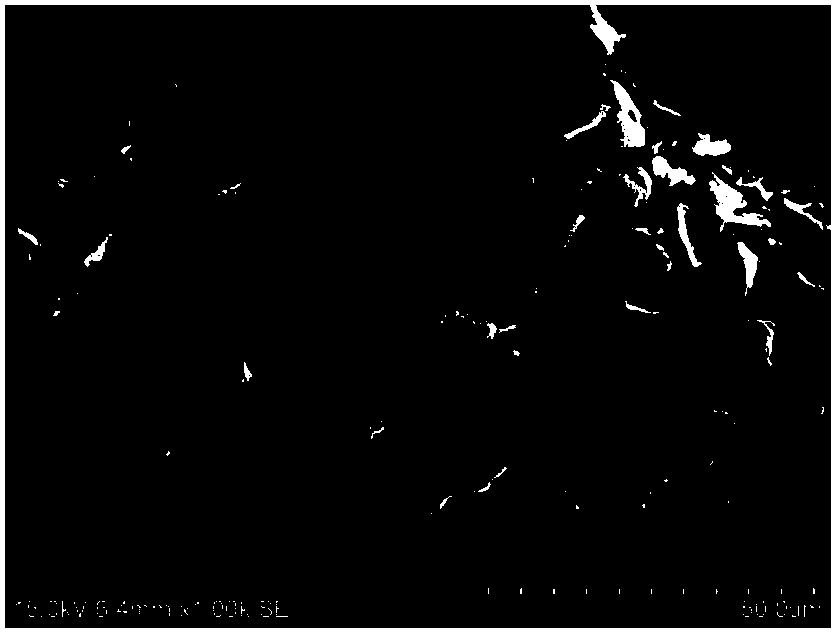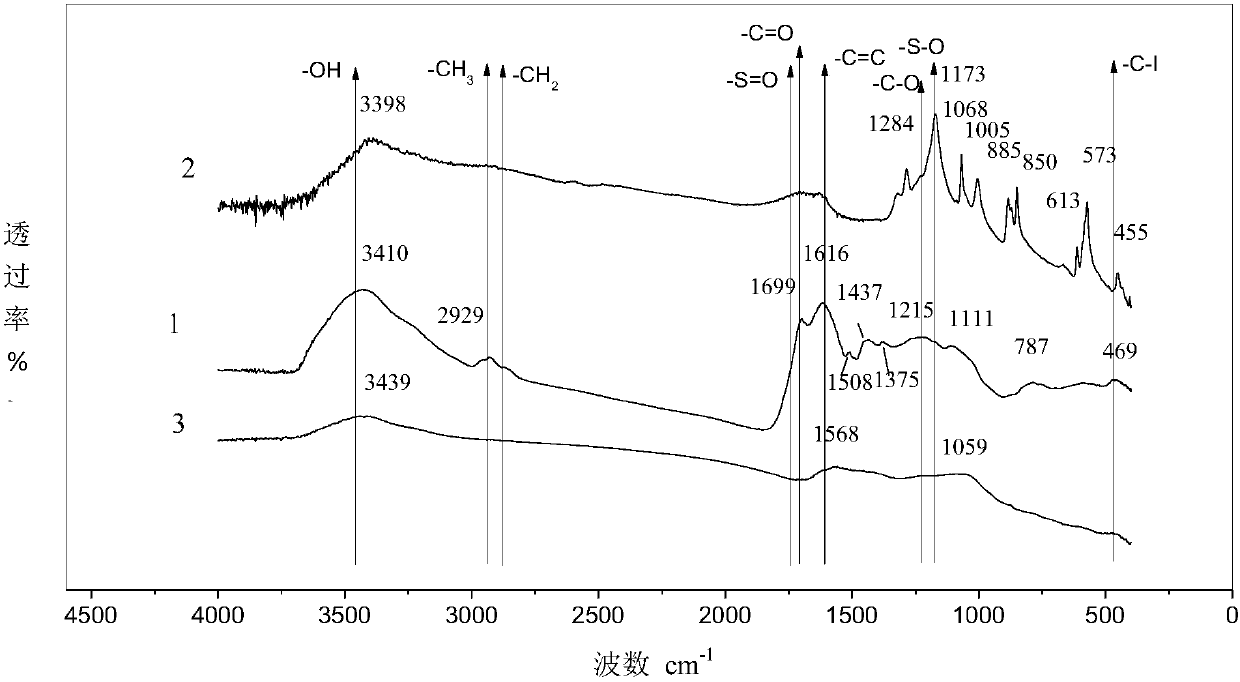A method for preparing biochar from organic waste by sulfonated carbon low-temperature catalysis
A technology of organic waste and biochar, applied in chemical instruments and methods, physical/chemical process catalysts, biofuels, etc., to achieve strong adsorption capacity, large specific surface area, and high value-added resource utilization
- Summary
- Abstract
- Description
- Claims
- Application Information
AI Technical Summary
Problems solved by technology
Method used
Image
Examples
Embodiment 1
[0026] Crush corn stalks into small pieces of 1-3 cm, heat them in an oxygen-limited muffle furnace at 480°C for 2 hours, and cool naturally to room temperature to prepare aromatic ring biochar, and then put the biochar into PTFE-lined reaction In the kettle, completely submerged with 98% oleum, sulfonated at 105°C under oxygen-limited conditions for 12 hours, suction-filtered and rinsed the sulfonated sulfonated carbon to pH 4.5, and freeze-dried at -18°C for 18 hours. A sulfonated carbon catalyst was obtained. attached by figure 1 The SEM images and attached figure 2 It can be seen that the specific surface area, high porosity and high sulfonation rate of sulfonated carbon are 112.5m 2 / g, 0.028cm 3 / g, 2.4mmol / g.
[0027] Crush the agricultural waste corn stalks to less than 0.5 cm, mix the sulfonated carbon catalyst and the crushed corn stalks evenly at a mass ratio of 1:100, and evenly spray clean water accounting for 1% of the total weight of the mixture on the mixt...
Embodiment 2
[0030] Grinding the waste residue of traditional Chinese medicine to below 0.2 cm, mixing the sulfonated carbon catalyst prepared in Example 1 and the waste residue of Chinese medicine after crushing with a mass ratio of 1:98, and spraying evenly on the mixture to account for 0.5% of the total weight of the mixture After being stirred evenly, the purified water enters the rotary heating reactor, and is heated in a closed rotary heater with a furnace temperature of 130°C for 2 hours, and the reactor speed is 100 revolutions / h to obtain biochar. attached by Figure 4 The SEM image shows that the biochar has a large specific surface area, high porosity, and high carbonization ratio, which are 100.1m 2 / g, 0.019cm 3 / g, 99.5%. The biochar has a maximum adsorption capacity of 13.5 mg / g for polybrominated diphenyl ethers BDE-47 with a concentration of 25 μg / L in sewage.
PUM
| Property | Measurement | Unit |
|---|---|---|
| Degree of sulfonation | aaaaa | aaaaa |
| specific surface area | aaaaa | aaaaa |
Abstract
Description
Claims
Application Information
 Login to View More
Login to View More - R&D
- Intellectual Property
- Life Sciences
- Materials
- Tech Scout
- Unparalleled Data Quality
- Higher Quality Content
- 60% Fewer Hallucinations
Browse by: Latest US Patents, China's latest patents, Technical Efficacy Thesaurus, Application Domain, Technology Topic, Popular Technical Reports.
© 2025 PatSnap. All rights reserved.Legal|Privacy policy|Modern Slavery Act Transparency Statement|Sitemap|About US| Contact US: help@patsnap.com



